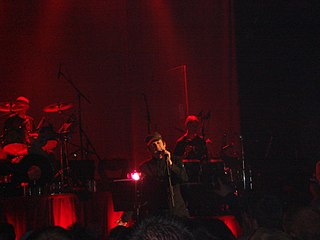
The Beautiful South were an English pop rock group formed in 1988 by Paul Heaton and Dave Hemingway, two former members of the Hull group the Housemartins, both of whom performed lead and backing vocals. Other members throughout the band's existence were former Housemartins roadie Sean Welch (bass), Dave Stead (drums) and Dave Rotheray (guitar). The band's original material was written by Heaton and Rotheray.

Paul David Heaton is an English singer-songwriter. He was the frontman of the Housemartins, who had success with the singles "Happy Hour" and the UK number one "Caravan of Love" in 1986 before disbanding in 1988. He then formed The Beautiful South, whose debut single and album were released in 1989 to commercial success. They had a series of hits throughout the 1990s, including the number-one single "A Little Time". They disbanded in 2007. He subsequently pursued a solo career, which produced three albums, and in 2014 he released What Have We Become?, a collaboration with former Beautiful South vocalist Jacqui Abbott. As of 2022, he has recorded four more albums with her: Wisdom, Laughter and Lines in 2015, Crooked Calypso in 2017, Manchester Calling in 2020 and N.K-Pop in 2022.

Golddiggas, Headnodders and Pholk Songs is the ninth and penultimate album by The Beautiful South, released in 2004. It is almost entirely a covers album, with one notable exception. The track "This Old Skin" was originally claimed to have been written by Bobby Christiansand/Barry Klein, and to have been originally performed by an obscure band called "The Heppelbaums" in the 1970s, but it was later revealed to have been an original composition by the usual Beautiful South writing team, Paul Heaton and Dave Rotheray. This was confirmed in 2006 by frontman Paul Heaton during a Question and Answer session entitled "Ask the Band". Prior to that, a website for The Heppelbaums had been created, in which many more clues to the real identity of the band were revealed. The domain was created on 5 August 2004 and registered to Sony, the band's record label. Although the website no longer exists, the contents can still be found on Archived 7 May 2006 at the Wayback Machine

Miaow is the fourth album by English pop rock group the Beautiful South. It was released in 1994 via GO! Discs. As with most Beautiful South albums, the songs were written by Dave Rotheray and Paul Heaton. The cover originally depicted numerous dogs seated in a music hall with a gramophone on the stage. However, HMV made the band withdraw it as it mocked their trademark dog, and the band put out a second cover depicting four dogs in a boat. Both paintings were created by Michael Sowa.

Carry On Up the Charts: The Best of the Beautiful South is an album by English Alternative rock band The Beautiful South. It is the group's fifth album and their first greatest hits collection. It was a major commercial success, reaching number one in the UK Albums Chart and going on to become the second biggest selling album of 1994.

Quench is the Beautiful South's sixth original album, released in the UK on 12 October 1998. Including the compilation Carry On Up The Charts, it was the band's third album in a row to reach the top of the charts.
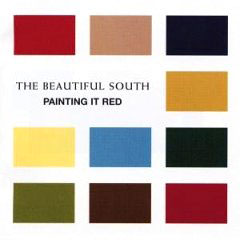
Painting It Red is the seventh album by the Beautiful South, released in 2000. A concept album about impending middle age, Painting it Red is among the band's longest. A two-disc UK bonus version contains 20 tracks. The American release on Ark21 has only 17 tracks.

Solid Bronze: Great Hits is The Beautiful South's ninth album and second greatest hits compilation. It was released in November 2001 and contains 19 tracks. The album contains two songs that were released between Carry on up the Charts and Blue Is the Colour, and never made it onto any album.

Gaze is the eighth studio album by the rock band The Beautiful South. It was released in 2003 on Mercury Records. The release was accompanied by the Gaze With The Beautiful South tour. This was also the band debut for Allison Wheeler who replaced the departing Jacqui Abbott. All songs were written by Paul Heaton and Dave Rotheray.

"How Long's a Tear Take to Dry?" is a single by British pop rock group the Beautiful South from their sixth album, Quench (1998). It was written by Paul Heaton and Dave Rotheray. The lyrics, which take the form of a conversation between two reconciling lovers, are noted for a reference to the TARDIS from Doctor Who. According to the book Last Orders at the Liars Bar: the Official Story of the Beautiful South, "How Long's a Tear Take to Dry?" was originally to be called "She Bangs the Buns" due to its chord structure reminiscent of Manchester's the Stone Roses. The song reached number 12 on the UK Singles Chart, becoming the band's 12th and final top-20 hit.
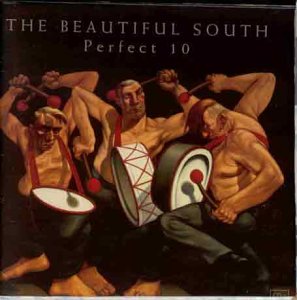
"Perfect 10" is a song by English pop rock band the Beautiful South, released on 21 September 1998 as the first single from their sixth studio album, Quench (1998). It debuted at number two on the UK Singles Chart, selling 89,000 copies during its first week of release, and is the band's last UK top-10 single to date. It received a platinum certification from the British Phonographic Industry in 2021 for sales and streams exceeding 600,000 units.

Jacqueline Abbott is an English singer who was a vocalist with the band The Beautiful South from 1994 to 2000, following the departure of Briana Corrigan.

Gold by The Beautiful South is the third greatest hits album to be released by the band. It is similar in design to other "Gold" albums released by bands either currently or previously of various labels under the Universal Music Group. The album is a 2 disc collection of both single and album tracks taken from the first 8 of the band's back catalogue. It was released without the band's consent and had zero input from the band.
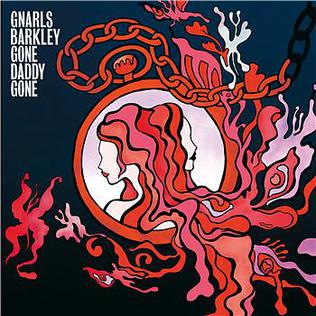
"Who Cares?" and "Gone Daddy Gone" are songs performed by Gnarls Barkley and are featured on their debut album, St. Elsewhere. The songs were released on November 6, 2006 as a double A-sided single from that album in the United Kingdom. A week later, on November 13, 2006, the single debuted at No. 60 in the UK Singles Chart. "Gone Daddy Gone" is a cover of the Violent Femmes song. The song peaked at No. 26 on Billboard's Modern Rock Tracks chart, and at No. 35 on Billboard's Adult Top 40 chart. The song "Gone Daddy Gone" is also featured in the soundtrack for the video game Tony Hawk's Project 8, the soundtrack for Forza Motorsport 2 and in the trailer for the Chris Rock film I Think I Love My Wife.
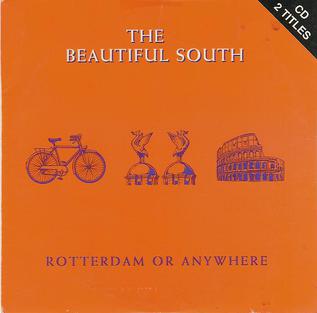
"Rotterdam (Or Anywhere)" is a song by English pop rock music group the Beautiful South, taken from their fifth studio album, Blue Is the Colour (1996). It features Jacqui Abbott on lead vocals. Released in September 1996, the song reached number five on the UK Singles Chart and stayed in the UK top 40 for nine weeks.

"The Circle" is a song by English rock band Ocean Colour Scene, released on 16 September 1996 as the fourth single form their second studio album, Moseley Shoals (1996). The song reached number six on the UK Singles Chart the same month. Like the previous single, this single was also released as an acoustic alternative on a second CD with additional B-sides.

"You've Got It Bad" is a song by English rock band Ocean Colour Scene. The song was released as the second single from their second album, Moseley Shoals (1996), on 25 March 1996 and reached number seven on the UK Singles Chart. The single was also released as a demo alternative on a second CD with additional B-sides. In the United States, the song was serviced to alternative radio in August 1996.

"Don't Marry Her" is a song by English pop rock group the Beautiful South and the opening track on their fifth studio album, Blue Is the Colour (1996). Vocalist Jacqui Abbott begs a man to run away with her from the woman he is going to marry and attempts to sway him by describing what she thinks married life with the other woman will be like, painting an uninviting picture. Released on 2 December 1996, the single peaked at number eight on the UK Singles Chart and was certified gold by the British Phonographic Industry.
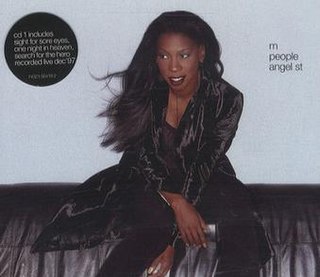
"Angel St" is the thirteenth single by British band M People, released on 16 March 1998 by M People Records. It was the third and final single from the band's fourth album, Fresco (1997). The song was written by Mike Pickering, Paul Heard and Heather Small and produced by M People and Chris Lord-Alge. It peaked at number eight on UK Singles Chart and number 24 on the Eurochart Hot 100.
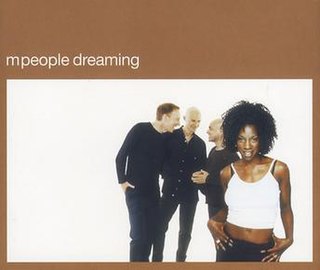
"Dreaming" is the nineteenth and to date final single from British band M People. It was released on 1 February 1999 as the second single from their first greatest hits album, The Best of M People (1998). The song is written by bandmembers Mike Pickering, Paul Heard and Heather Small, and produced by M People and Chris Lord-Alge. It peaked at number thirteen on the UK Singles Chart.




















